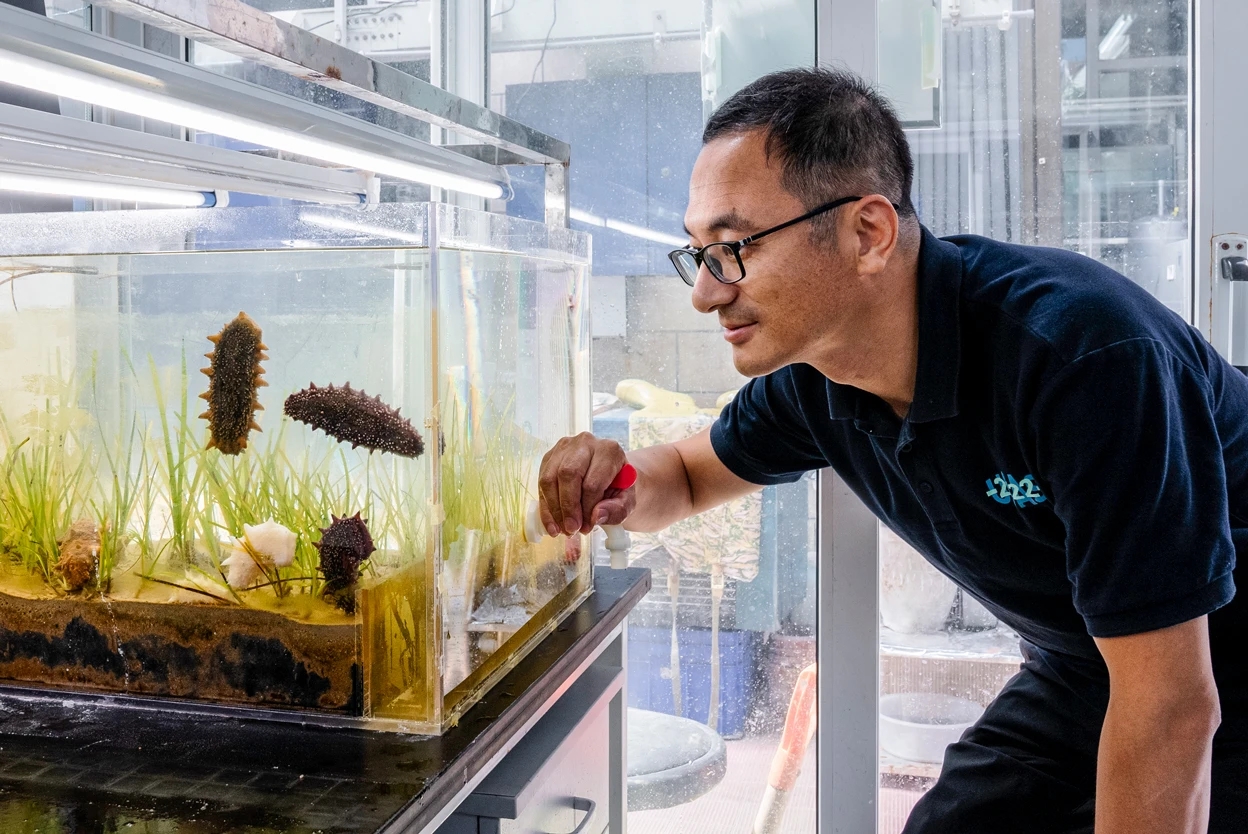Nature 617, 856 (2023)
(Text by ZHANG Libin, zhanglibin@qdio.ac.cn)
Libin Zhang aims to restore sea-cucumber populations to rebalance ocean ecosystems and so that people can use their beneficial compounds.

Libin Zhang is executive deputy director of the Engineering Laboratory for Marine Ranching in the Institute of Oceanology of the Chinese Academy of Sciences. Credit: Yue Wu for Nature
I study sea cucumbers, an economically important species in China that is valued for its nutritional and medicinal properties, and is important for the health of the ocean. It cleans the sea floor by feeding on detritus. Thanks to climate change and overfishing, sea-cucumber numbers are falling.
At the Engineering Laboratory for Marine Ranching (ELMR), we study the animals to maximize their contributions to marine ranching — a form of sustainable aquaculture that restocks valuable species, such as the sea cucumber and the Sebastes schlegelii rockfish. First we transplant seagrass, and then we release sea cucumbers to clean degraded habitats. Next, we release fish, clams and other creatures to build a balanced ecosystem. The productivity is much higher than what would result from restoring one species.
In this picture, taken in the ELMR, which is in the Institute of Oceanology of the Chinese Academy of Sciences in Qingdao, I am looking at Apostichopus japonicus, the most important sea cucumber in northern China. In our tanks, we control temperature and pH to mimic ocean conditions. We study how sea cucumbers move, eat, interact and reproduce, which has helped us to design artificial reefs for the sea cucumbers we release.
A. japonicus has some powers that are almost magical. When the water rises above 23℃ in early June, this species begins aestivation, a summer hibernation. It loses its intestine, and regenerates the entire organ when it wakes up in October.
Sometimes, we find white or purple examples of A. japonicus, although it is usually green. The purple one is beautiful and contains beneficial compounds similar to those found in red wine, including astaxanthin, which has potent antioxidant and anti-inflammatory properties.
I hope that sea cucumbers can help to repair the ocean, and to repair the body.
More details: https://www.nature.com/articles/d41586-023-01711-9

